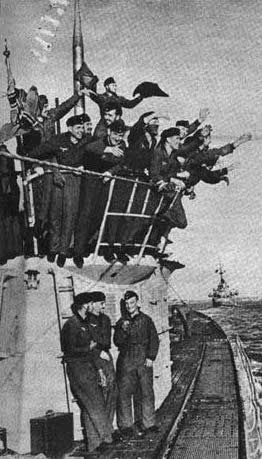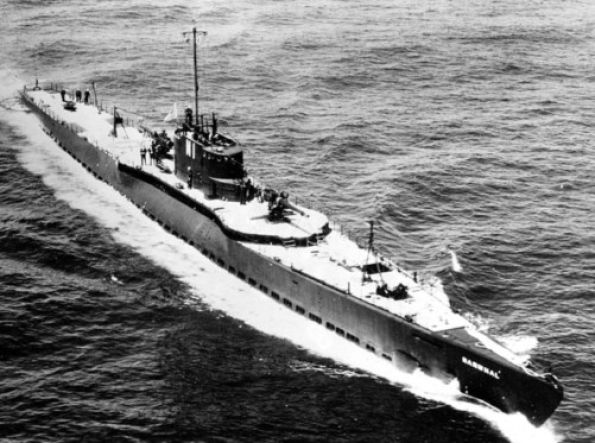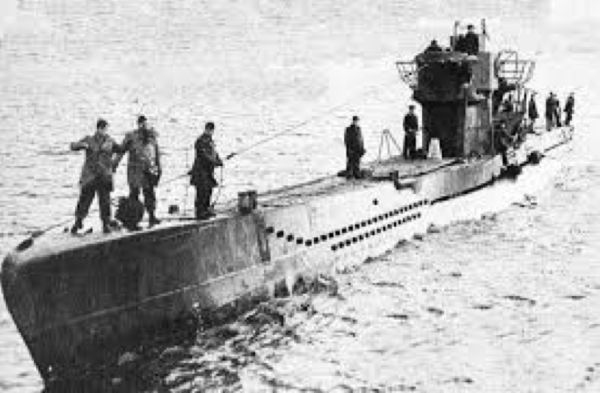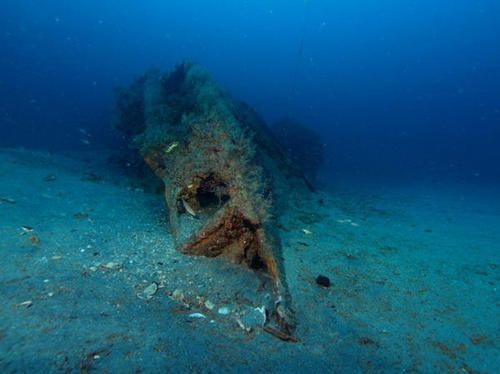 GOING TO SEA
GOING TO SEA
On April 6, 1945, a German navy submarine named the
U-1206
departed from the port city of Kristiansand, in Nazi-occupied Norway,
and began its first combat patrol. Assigned to the waters of the North
Atlantic, its mission was to seek out and destroy British and American
ships on the high seas.
For the 50-man crew aboard submarines like the
U-1206,
life wasn’t just extremely dangerous, it was also very unpleasant:
Quarters were cramped, and the bathrooms were no exception. There were
only two
heads (toilets), and because one of the heads was
right next to the galley, the space was often used to store food. When
it was, the toilet was unavailable, meaning the entire crew had to share
the remaining toilet.
UNDER PRESSURE
The
plumbing on German subs of that era differed from American and British
subs in one important respect: The German toilets discharged their
contents directly into the sea, instead of in a holding tank. Not having
such a tank saved precious space, but it came at a price. The toilets
could only be used when the submarine was traveling on or near the ocean
surface. When the submarine was submerged, the pressure outside the
hull was too great for the toilets to be able to flush.
If
nature called under such circumstances, crew members had to use buckets,
tin cans, or whatever other containers they could get their hands on.
They had to carefully store the contents of all those containers -don’t
spill!- until the submarine surfaced, when they could be poured into the
toilets and flushed, or taken topside and emptied into the sea.
The
ventilation systems on World War II German subs were notoriously
inadequate, which meant that even in the best of circumstances, the air
was foul with diesel fumes, human body odor, and other smells. When the
toilets were unavailable and all those buckets and cans were filling to
overflowing with you-know-what, the stench was even worse.
HEADS UP!
The
U-1206
had a new-and-improved plumbing system. Unlike many subs in the fleet,
it had high-pressure toilets that could be used at greater depths than
the standard heads could. But the new system was very difficult to
operate. The toilets came with complicated instructions manuals, and a
few members of the crew had to be trained so that they could serve a
toilet-flushing “specialists.”
Barely a week into the
U-1206’s
first patrol, Captain Karl Adolf Schlitt (who was commanding a sub for
the first time), had to use the head while the sub was cruising at a
depth of 200 feet, some eight miles off the coast of Scotland. Rather
than request the assistance of the toilet specialist, Schlitt tried to
follow the instructions in the manual to flush the toilet himself.
Something went wrong -and when Schlitt asked the toilet specialist for
help, something went wrong again. The specialist opened the outside
valve -the one that opened to the sea- while the inside valve was open,
causing a torrent of water to flood into the sub.
WHAT A GAS
It was then that another flaw in the
U-1206’s
design became apparent. When the submarine is submerged, it runs on
electric motors powered by a giant bank of batteries. And the
U-1206’s
batteries were in a compartment directly below the malfunctioning
toilet. The seawater quickly combined with battery acid and created
deadly chlorine gas, which began to spread throughout the sub.
As
the gas filled the submarine, Schlitt had no choice but to order the
submarine to surface so that the gas could be vented and replaced with
breathable air. Because they surfaced within sight of the Scottish
coastline, they were quickly spotted by Allied aircraft and attacked.
One crew member died in the melee that followed; three others fell
overboard and drowned.
The
U-1206 was badly damaged in
the attack and could not dive. Seeing no way to save his submarine,
Captain Schlitt ordered the crew into the lifeboats; then he scuttled
the ship, making it the only warship in naval history to be doomed by
its own malfunctioning toilet. Thirty-six members of the crew were
rescued by small boats in the area; ten others made it to shore in their
lifeboats and were captured.
POT LUCKIn its eight days on patrol, the
U-1206
never did manage to attack any Allied ships. Not that it would have
made any difference to the Nazi war effort, which had just three more
weeks to go. On April 30, Adolf Hitler committed suicide in his
Führerbunker in Berlin; seven days later, Germany surrendered and the
war in Europe was over.
It’s possible that the toilet that sent the
U-1206
to the bottom of the Atlantic may have saved the surviving 46 members
of the crew. Though Winston Churchill later admitted that “the only
thing that ever frightened me during the war was the U-boat peril,” by
the summer of 1943 the Battle of the Atlantic had turned decisively in
favor of the Allies, who were now able to sink U-boats faster than the
Germans could replace them. The odds of a German submariner surviving
the war were slim: 75% of the entire U-boat fleet was sunk during the
war, and 30,000 of the submarine service’s 40,000 crew members went to a
watery grave with them.
Thanks, perhaps, to a malfunctioning toilet, the
U-1206’s 46 surviving crew members were not among them.


































